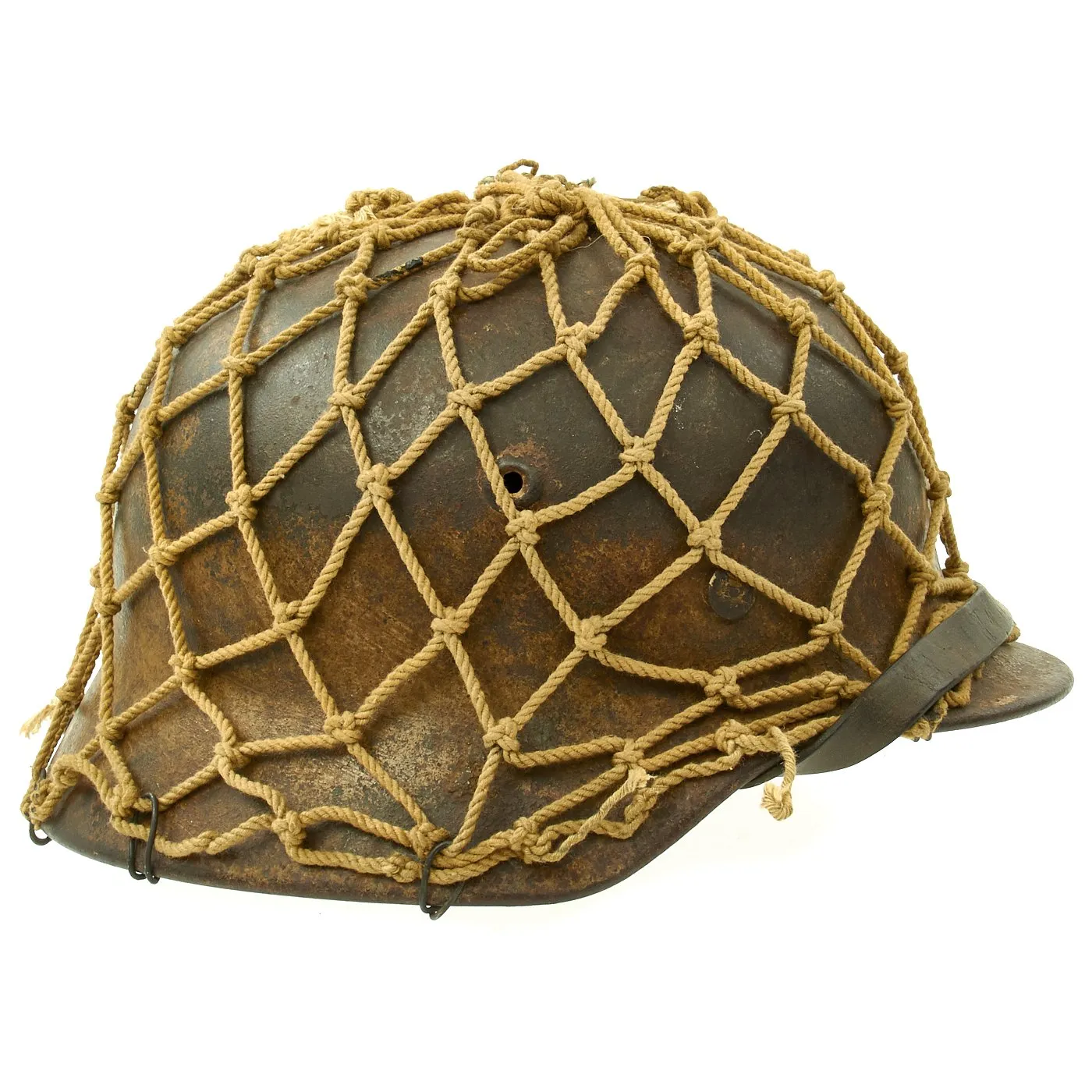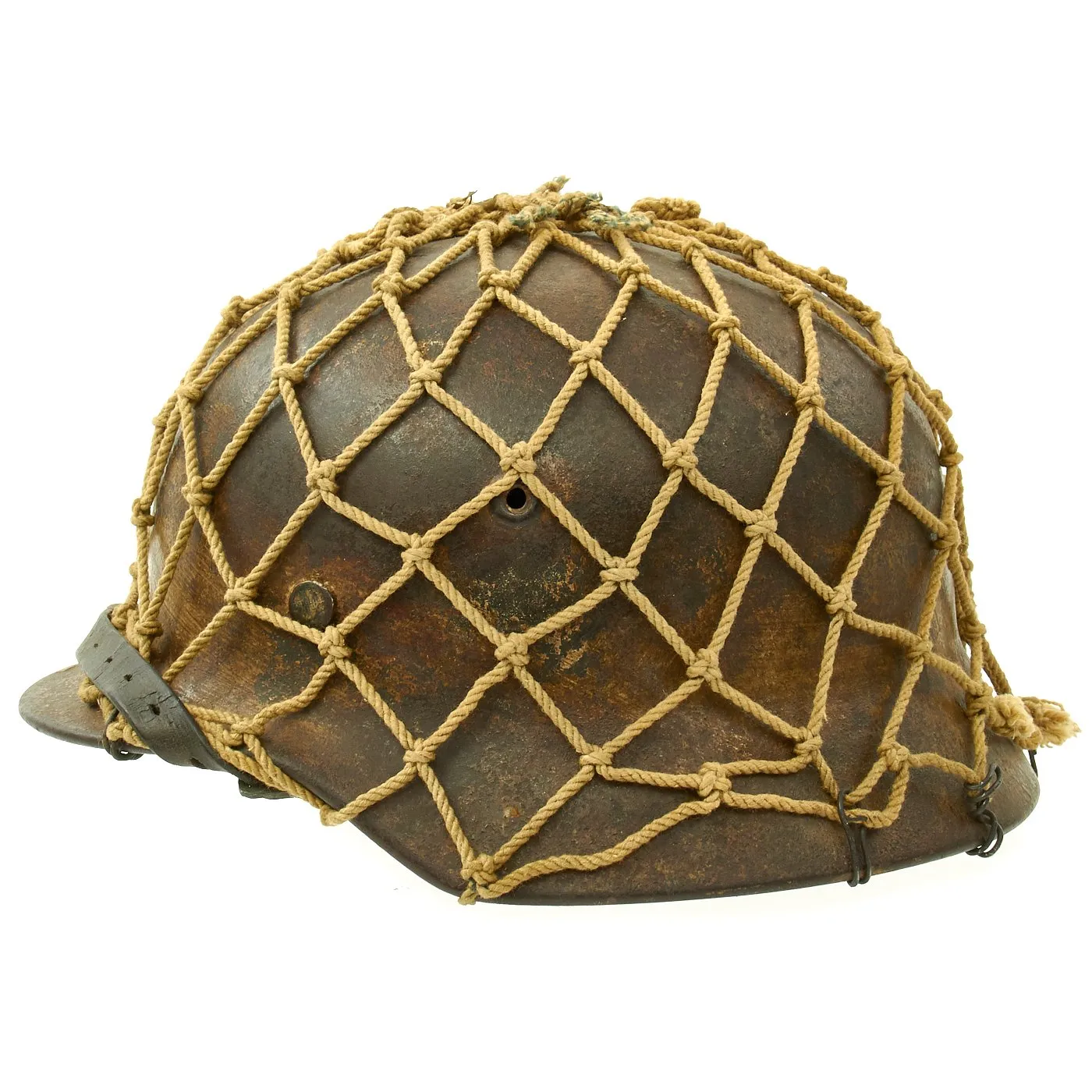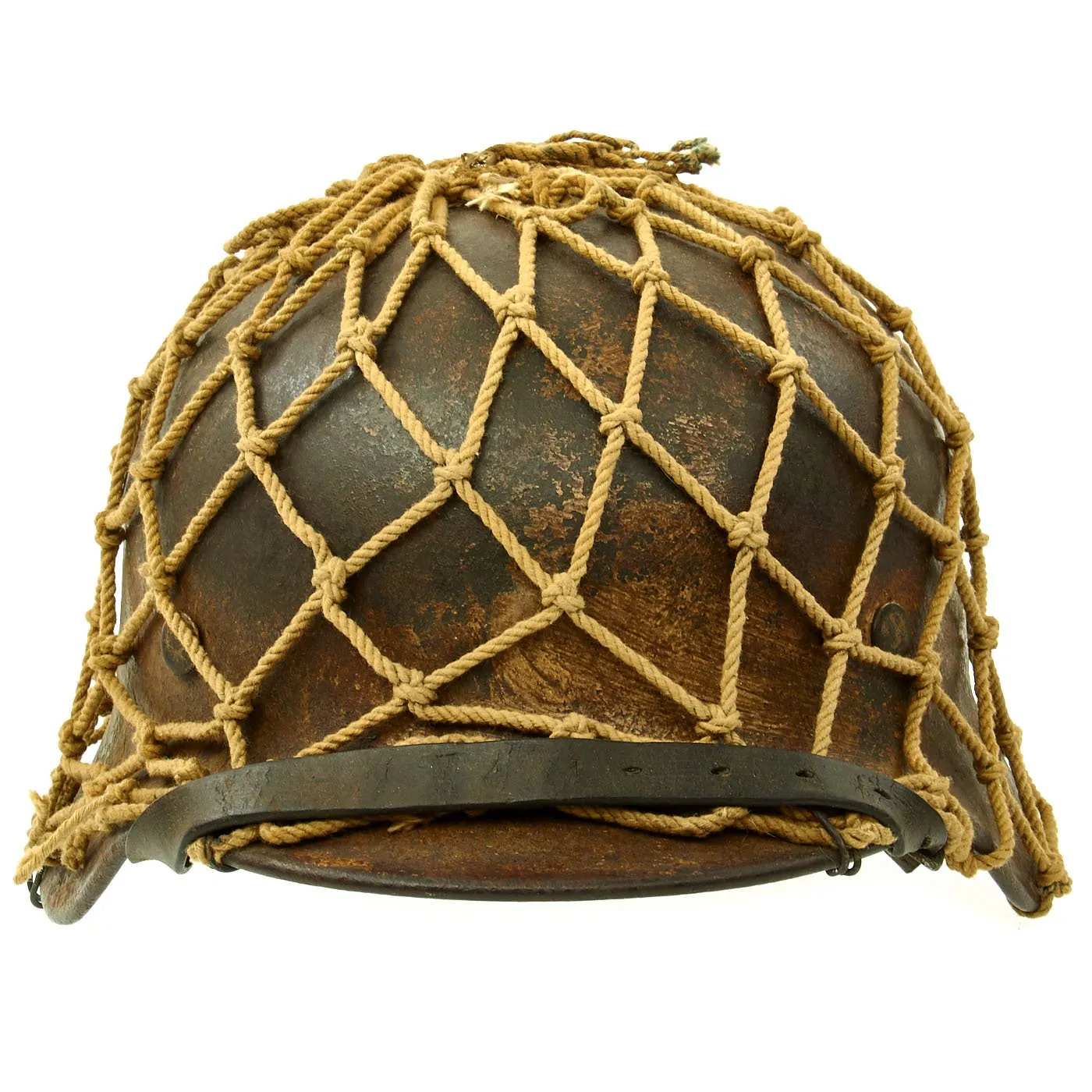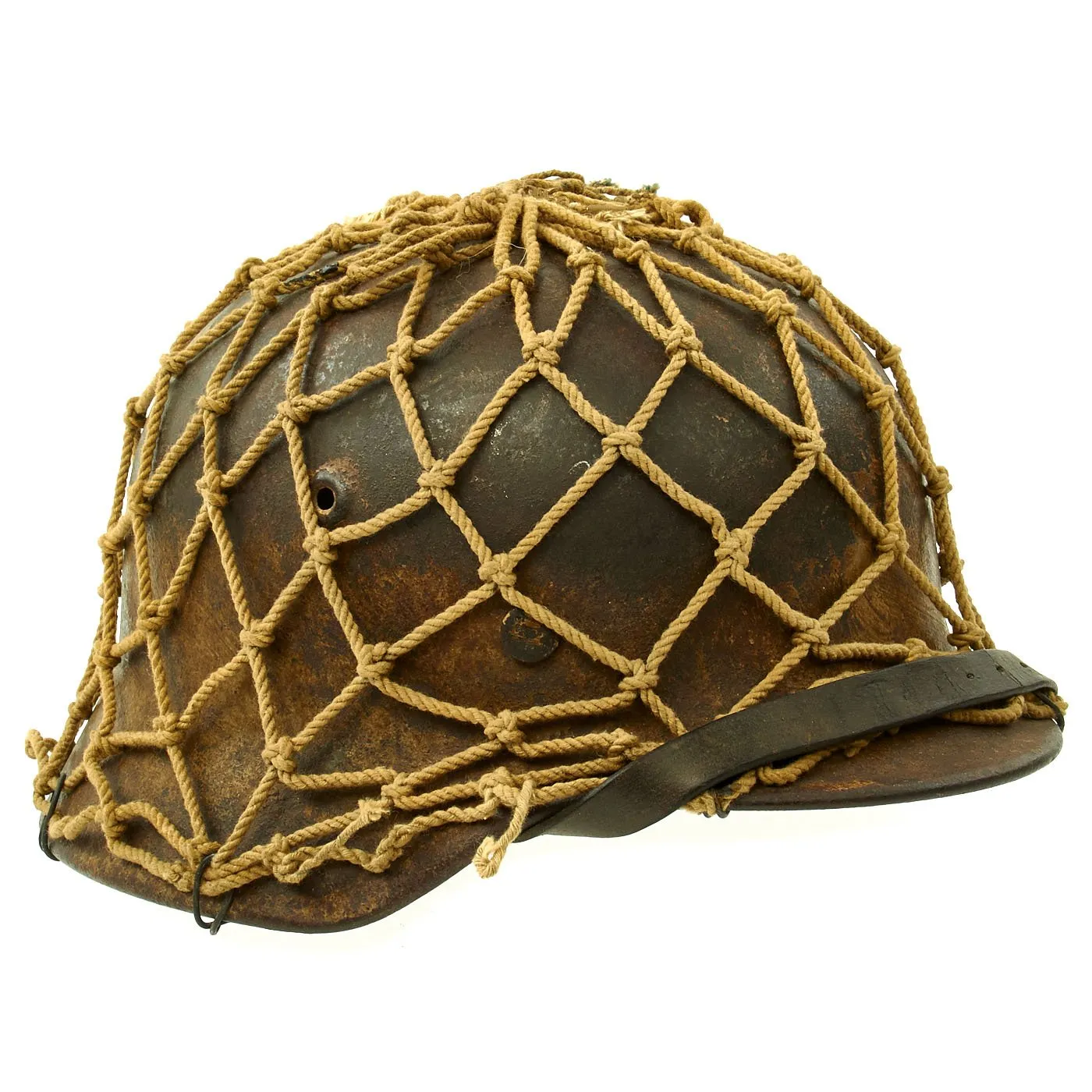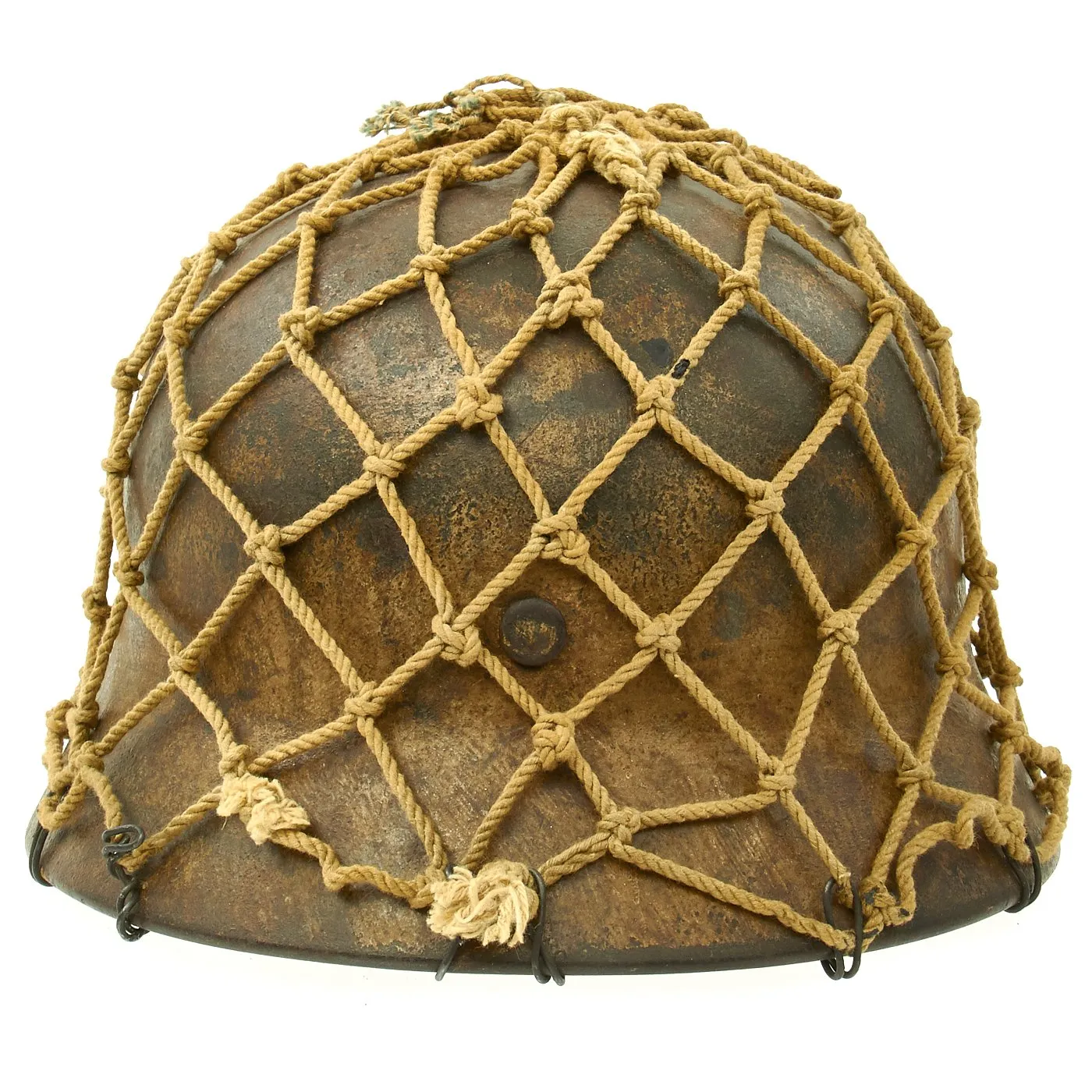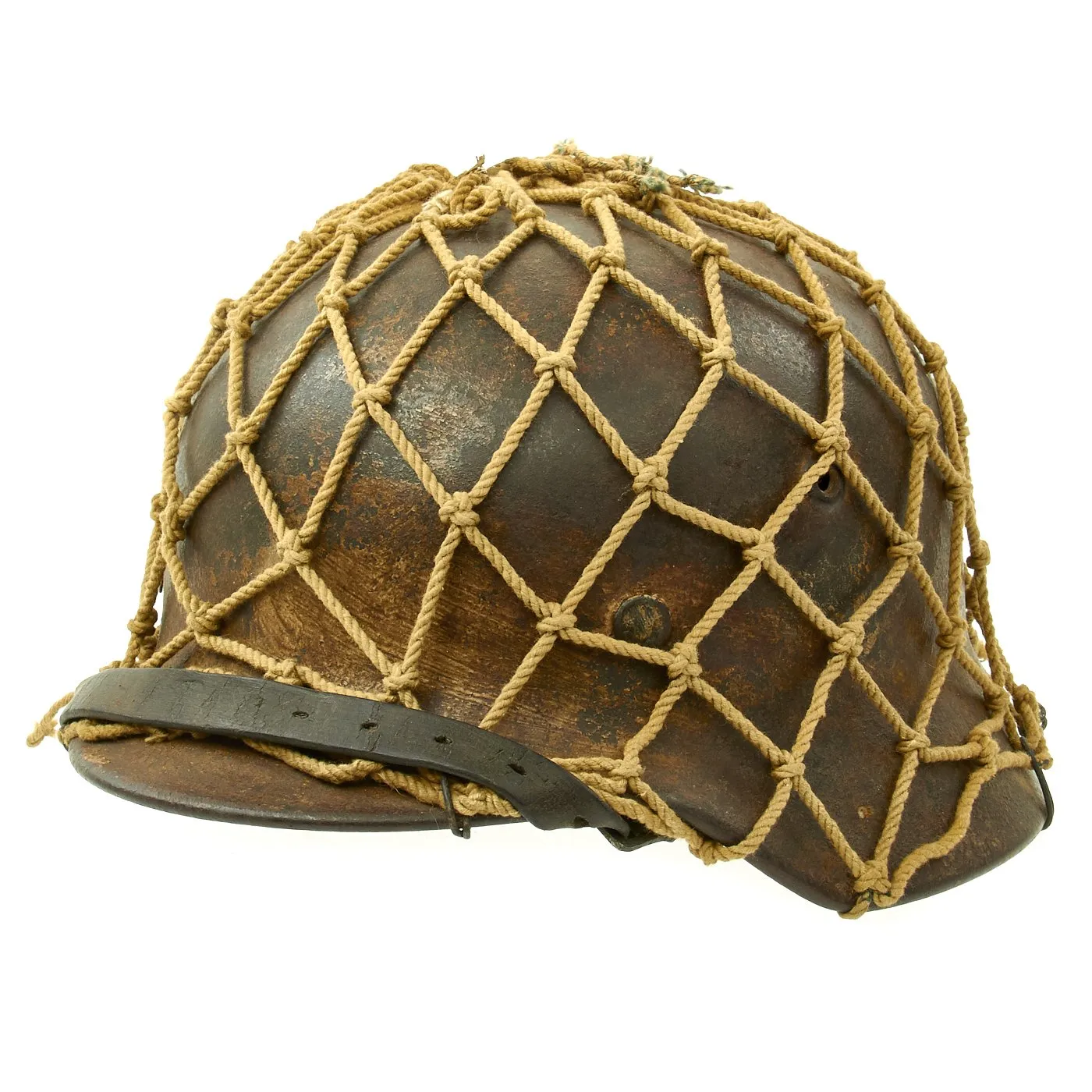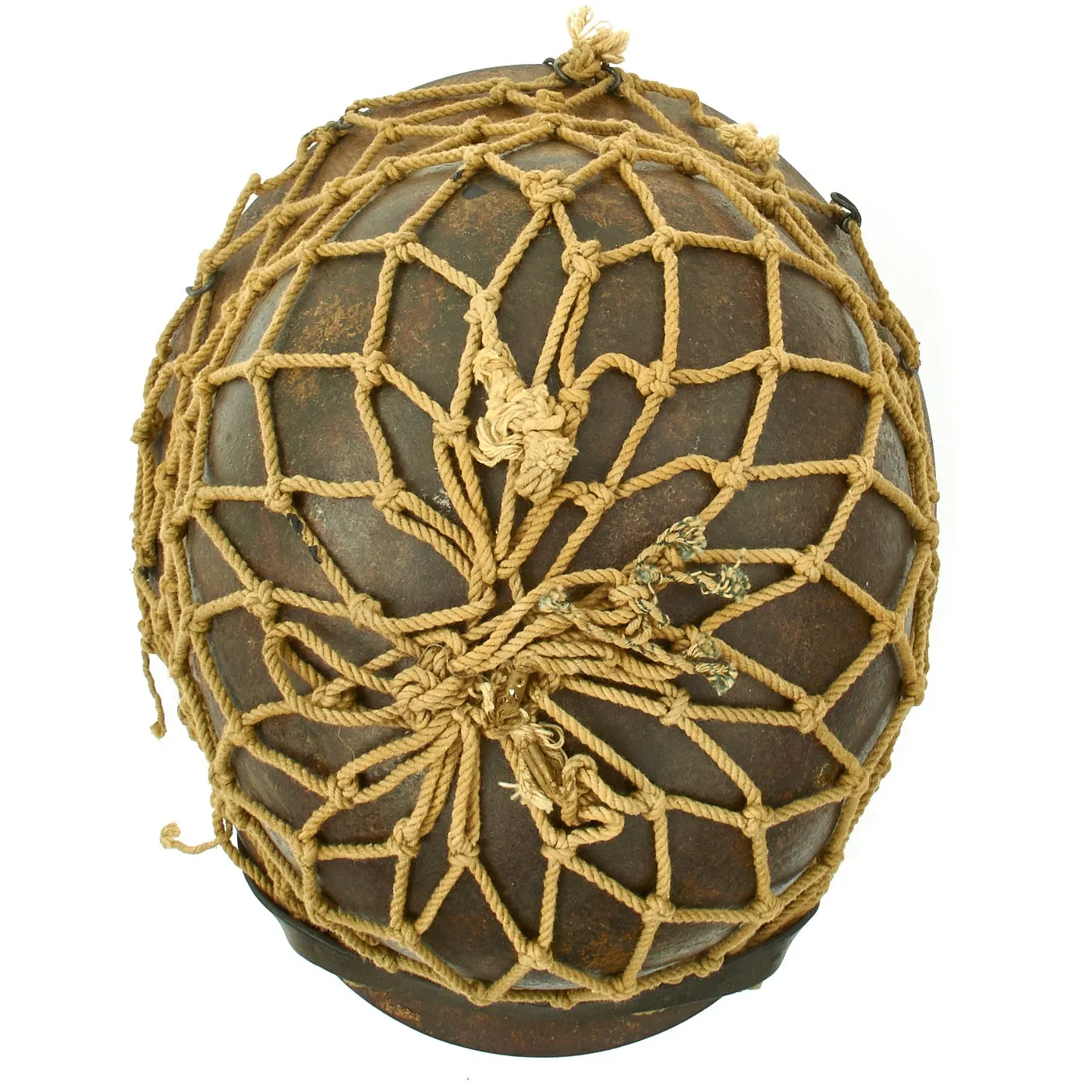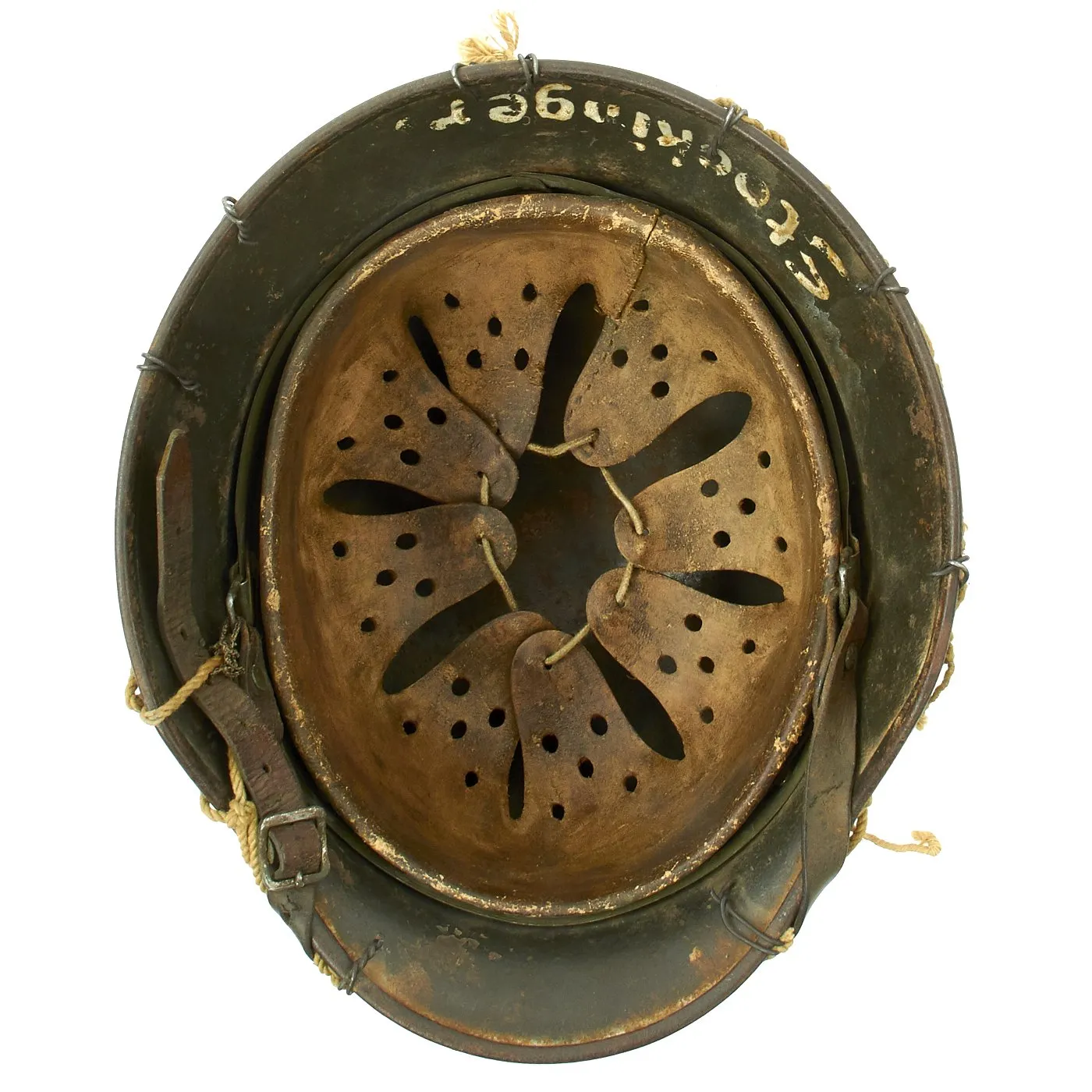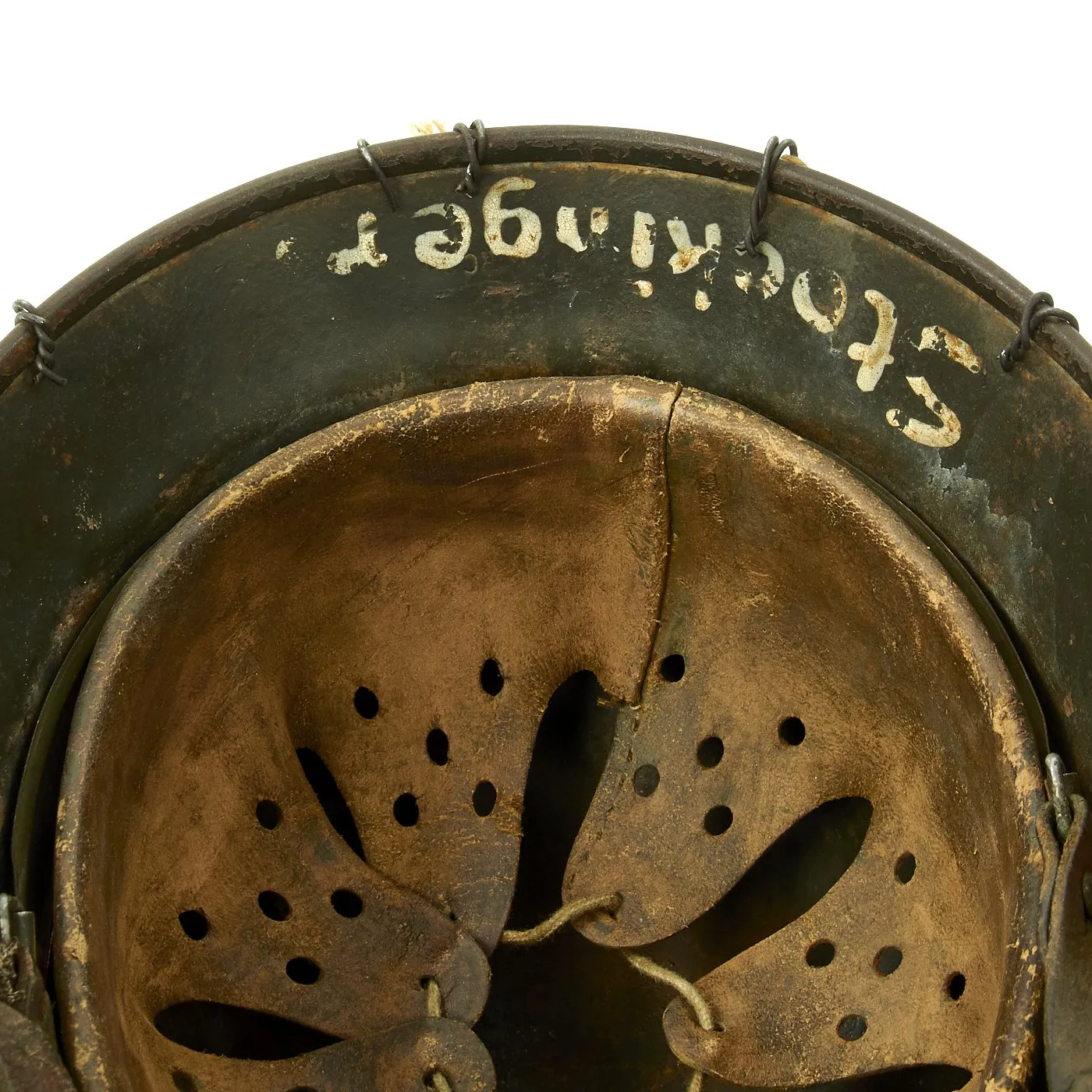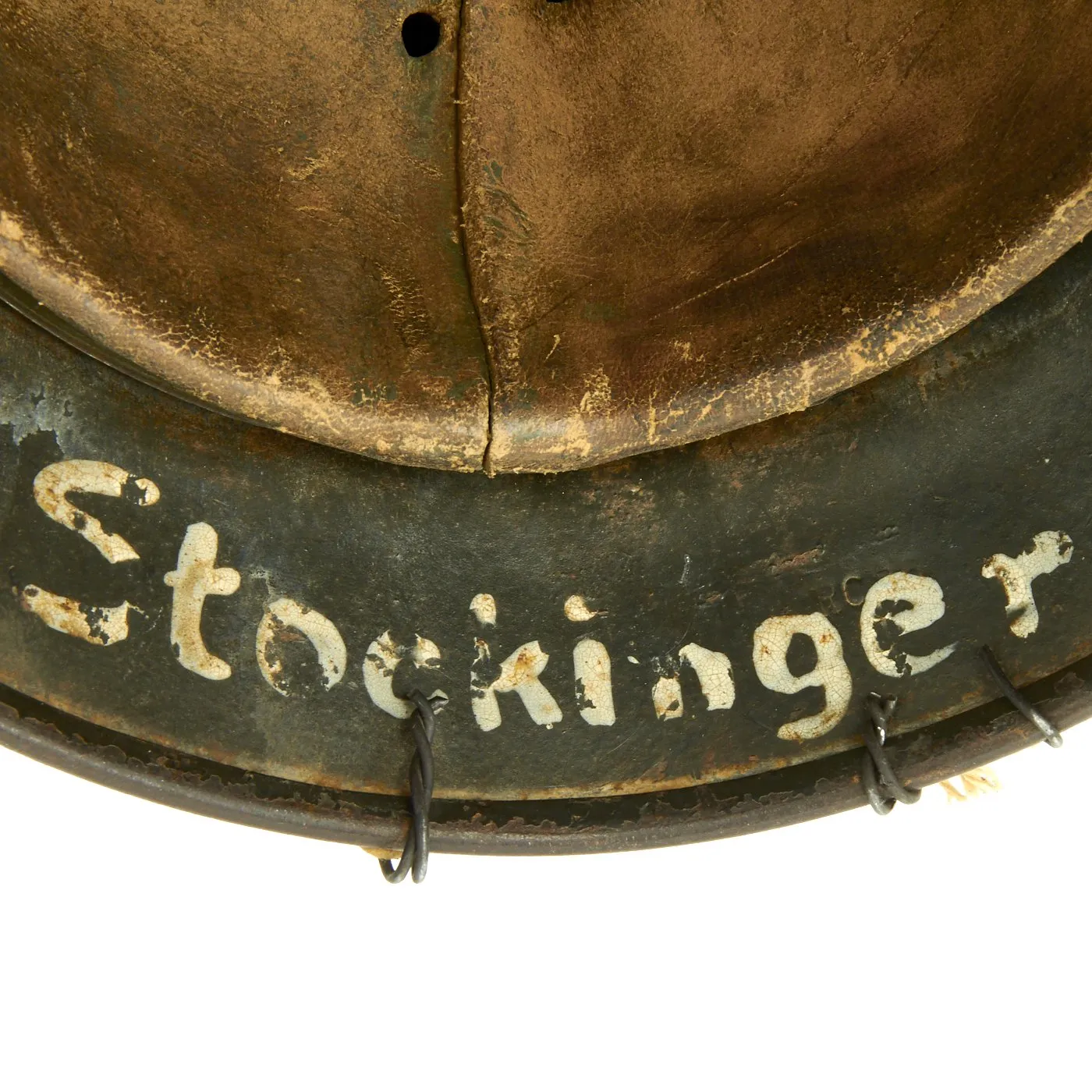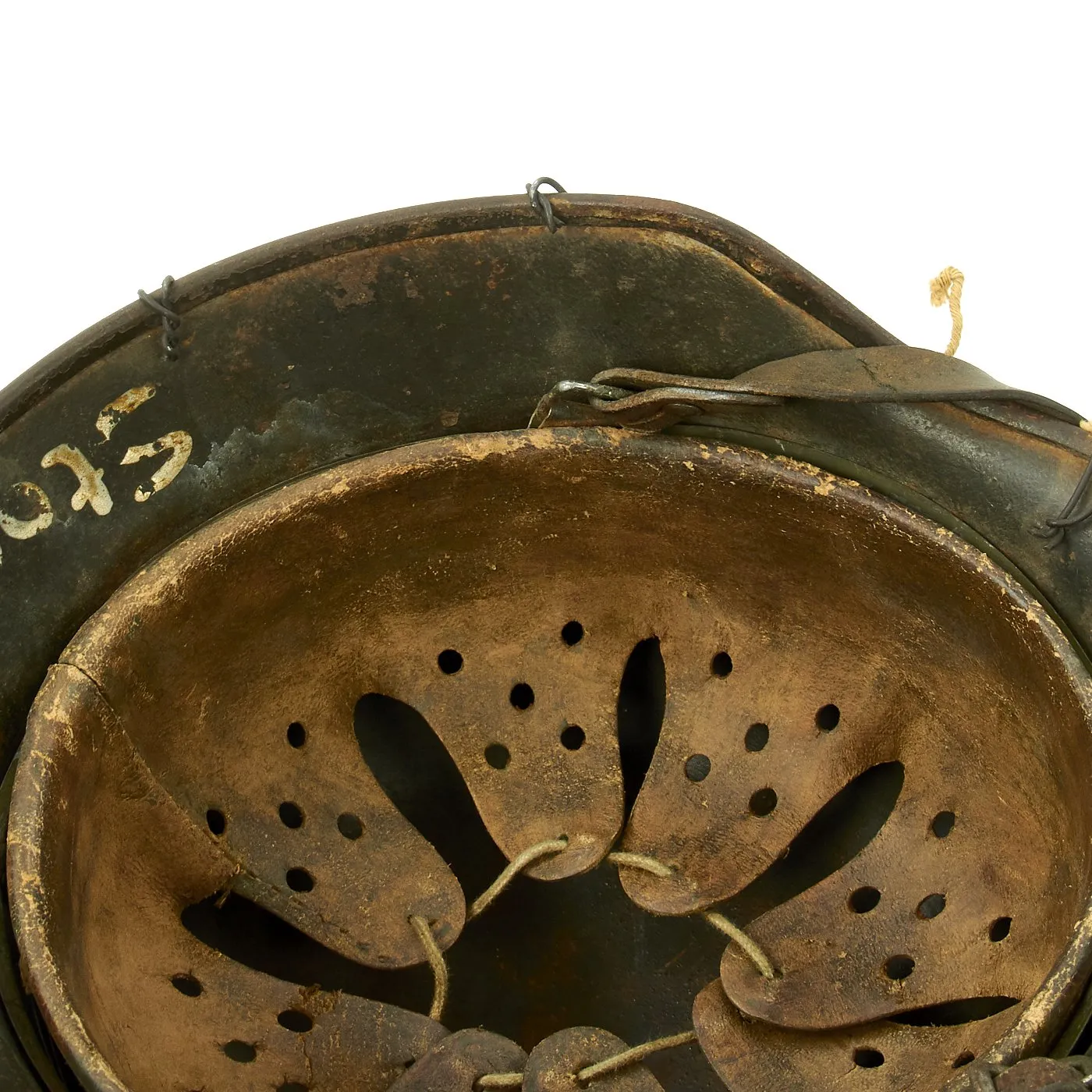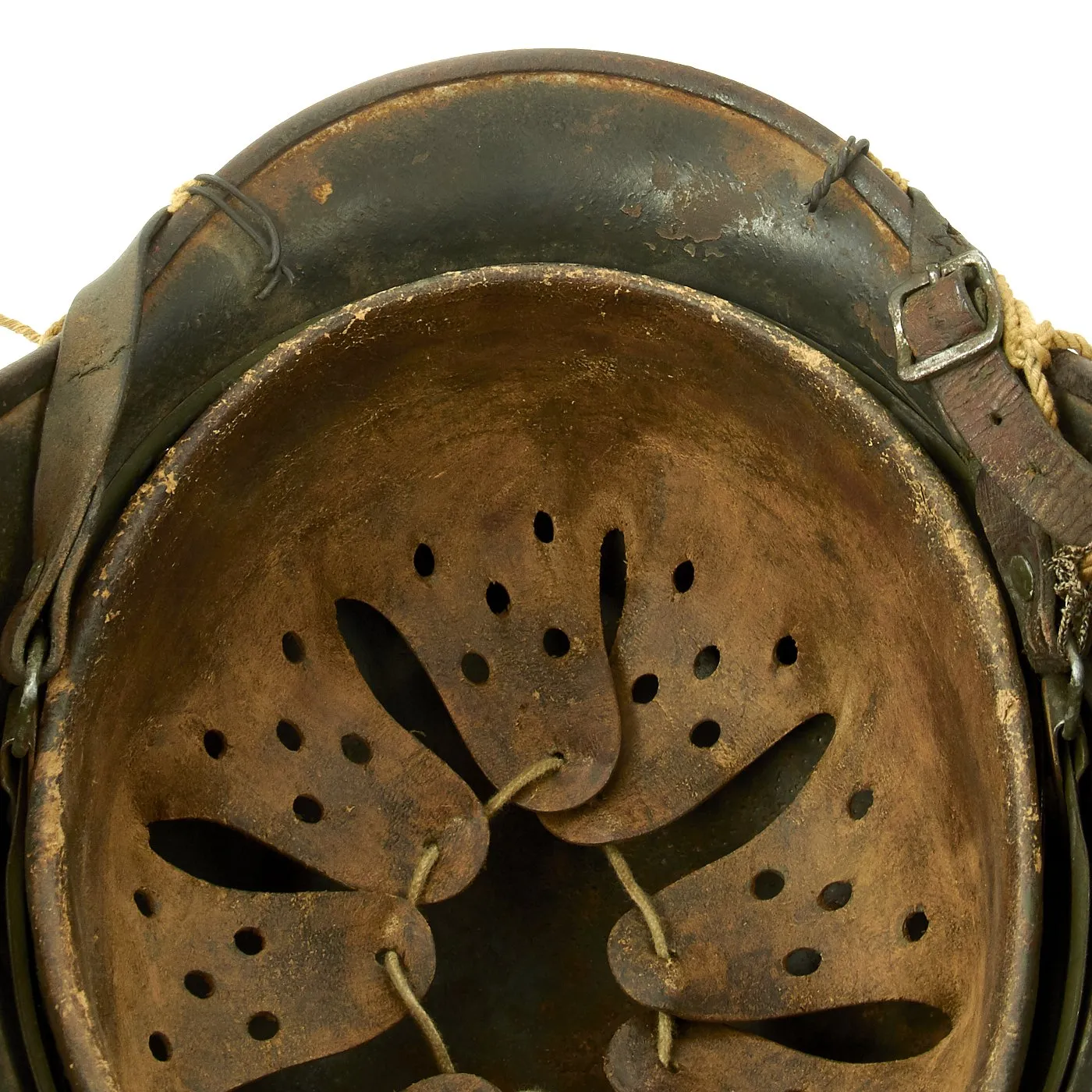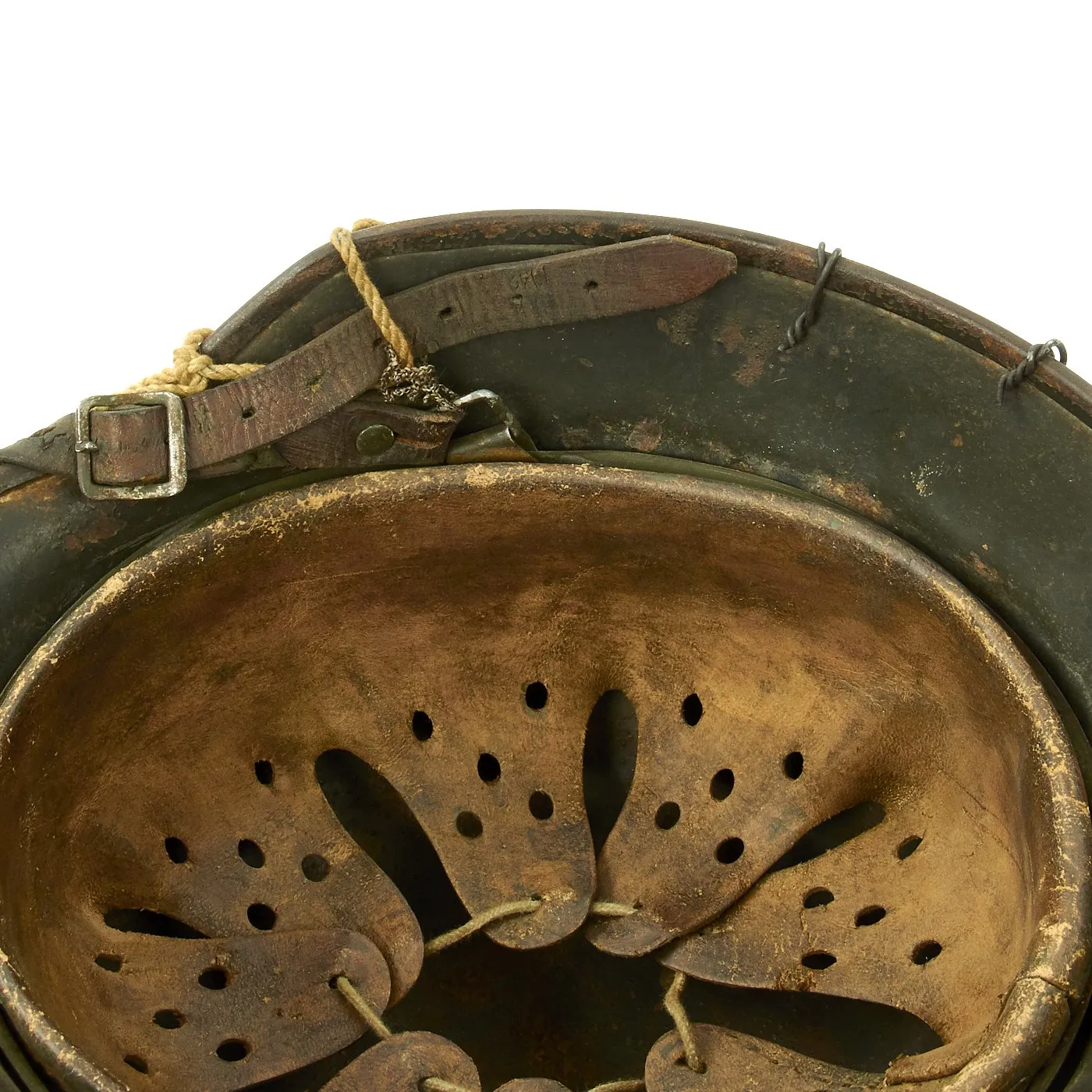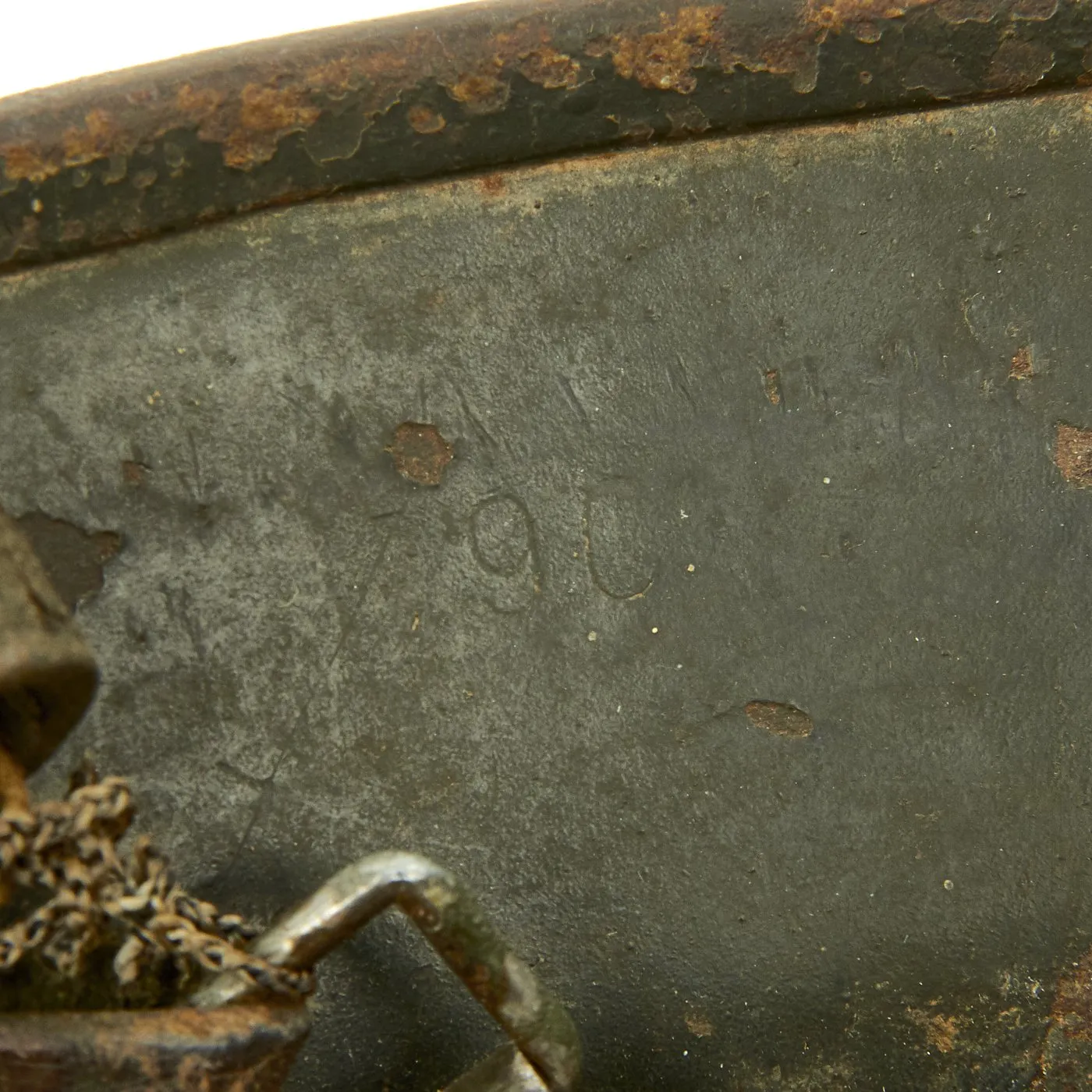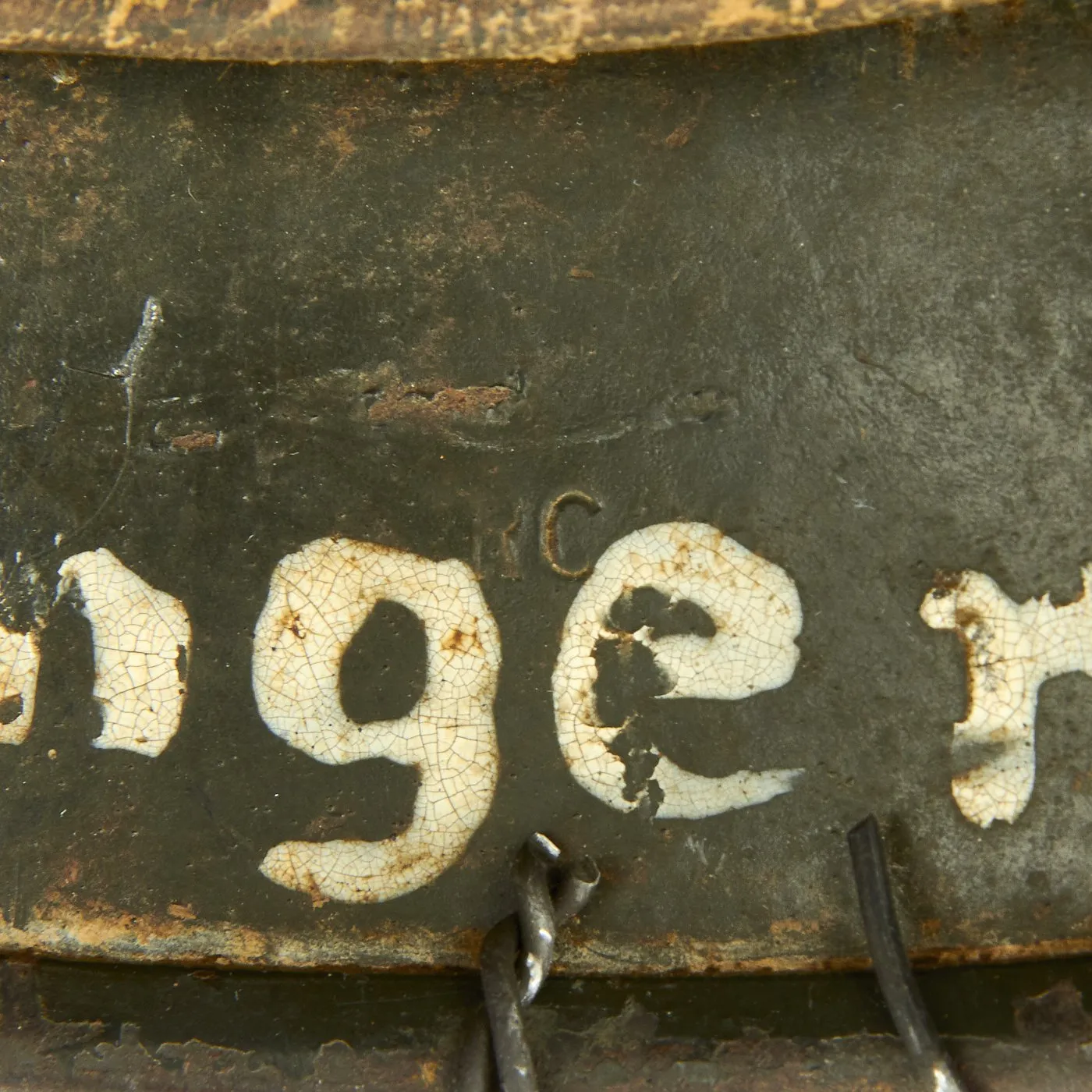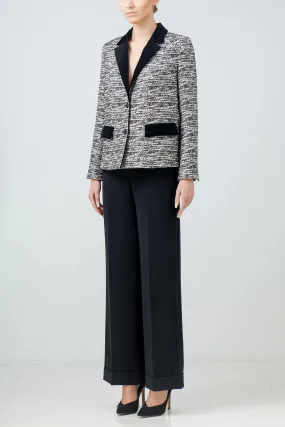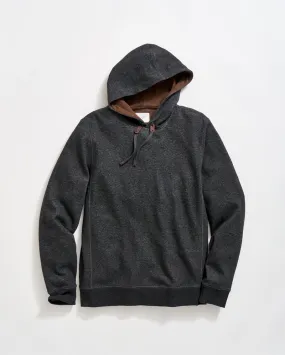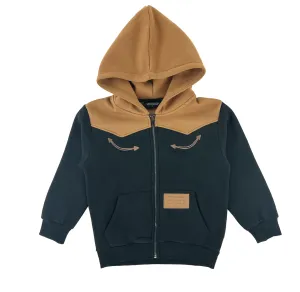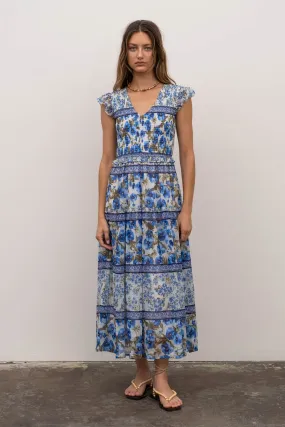Original Item: Only One Available. This is a very nice all original example of a German Afrika Korps Camouflage M40 Steel helmet, which was field repainted with a pink hue tan camouflage paint scheme. Over the shell is a helmet net which we can't be sure is period authentic, so for the sake of argument just consider it a post-war addition.
This stamped sheet steel construction shell helmet retains about 70% of the camouflage, while the rest has worn off, showing the original green grey "Feldgrau" color. This is definitely a helmet that saw service and exposure to the elements, and has a great look. The left side of the helmet features the silhouette outline of a Heer eagle decal.
All three liner retaining pins are intact with original paint still present. The interior of the helmet still has the original M31 leather liner with all eight of its fingers intact. The leather liner is in very good condition with signs of age and light staining. The side of the liner band over the left ear is stamped faintly 64 n.A./ 56, indicating a size 56 liner that would normally be installed in a size 64 shell. The top tie string is present, and looks to be original to the helmet. The chin strap is present and fully intact.
The reverse, interior, neck guard apron is serial number stamped but only partially legible and the interior, left side, apron has a stamped manufacturer's code and size, Q64 indicating manufacture by Quist in Esslingen, Germany in size 64. Size 64 is a nice large size that can accommodate liners from 56cm to 58cm or US 7 to 7 1/4. Size 64 shells are harder to find and are therefore more valuable to a collector. The reverse interior rim is also named in classic German white paint and lettering Stockinger.
Overall a fantastic 100% genuine M40 Named Africa Corps helmet! M40 helmets of this quality are always the hardest to find on the market. This is an item that will only continue to appreciate in value over time.
The first "modern" steel helmets were introduced by the French army in early 1915 and were shortly followed by the British army later that year. With plans on the drawing board, experimental helmets in the field, ("Gaede" helmet), and some captured French and British helmets the German army began tests for their own steel helmet at the Kummersdorf Proving Grounds in November, and in the field in December 1915. An acceptable pattern was developed and approved and production began at Eisen-und Hüttenwerke, AG Thale/Harz, (Iron and Foundry Works), in the spring of 1916.
These first modern M16 helmets evolved into the M18 helmets by the end of WWI. The M16 and M18 helmets remained in usage through-out the Weimar Reichswehr, (National Defence Force, Circa 1919-1933), era and on into the early years of the Third Reich until the development of the smaller, lighter M35 style helmet in June 1935.
In 1934 tests began on an improved Stahlhelm, whose design was a development of World War I models. The Eisenhüttenwerke company of Thale carried out prototype design and testing, with Dr. Friedrich Schwerd once again taking a hand.
The new helmet was pressed from sheets of molybdenum steel in several stages. The size of the flared visor and skirt was reduced, and the large projecting lugs for the obsolete armor shield were eliminated. The ventilator holes were retained, but were set in smaller hollow rivets mounted to the helmet's shell. The edges of the shell were rolled over, creating a smooth edge along the helmet. Finally, a completely new leather suspension, or liner, was incorporated that greatly improved the helmet's safety, adjustability, and comfort for each wearer. These improvements made the new M1935 helmet lighter, more compact, and more comfortable to wear than the previous designs.
The Army's Supreme Command officially accepted the new helmet on June 25, 1935 and it was intended to replace all other helmets in service.
The M1935 design was slightly modified in 1940 to simplify its construction, the manufacturing process now incorporating more automated stamping methods. The principal change was to stamp the ventilator hole mounts directly onto the shell, rather than utilizing separate fittings. In other respects, the M1940 helmet was identical to the M1935. The Germans still referred to the M1940 as the M1935, while the M1940 designation were given by collectors.




